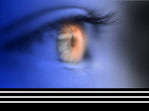|
Eventhough I've spoken about misshandling young horses already, especially in my photo album
page, I think this is a subject that warrants a page of it's own...
The first thing you need to understand is that a horse is not fully developed until it's
6 years old. So, when you start a 2 or 3 year old, you must keep in mind, that is an adolescent you are working with. If you're
too heavy-handed with a human child, what effect will that have on the child's development? Why would you expect things would
be different with a horse? Just as with raising human children, you gotta know when to be firm, & when to be giving.
The point is, or should be, to show the horse that you are a leader he/she can trust, &
that you will look out for the horse's best interests. In this way, the horse both likes & trusts you, enabling the horse
to learn & submit more quickly. If a horse likes you, but doesn't trust you, or doesn't see you as it's leader, then you
just have a wreck waiting to happen. Taking the time in the beginning to establish the proper relationship with a horse simply
makes everything in the future much more accessable.
Many people are hooked on the idea of a certain number of rides in a certain number of days
with a green colt. However, that is totally unrealistic... Well-bred horses generally start much quicker than lesser quality
horses, & require much less saddle time to reach the same point. And, being individuals, every horse's needs, & potential,
are quite varied - even beyond breeding. Then, spoiled horses, abused horses, or horses started wrong (especially if
they've been left for a considerable time to fix the wrong ideas in their head), are even more unique in their needs. Anyone
starting colts, or reschooling horses, should be able to recognize this, & adapt their methods accordingly. I have seen
a large number of horses around here that were ruined, or damn near ruined, by inexperienced "trainers" though.
I know there are compassionate, knowledgable, horse people around here; however, too
many of the horses I've seen which were started previously by other people in this area, were unsafe, nervous
wrecks! One colt, a damn good looking gelding, was a real puppy dog when you were on the ground, & about as safe as a
train wreck once/if you were able to climb on board! His half brother, started by the same individual, had a kink in his neck
that couldn't be worked out, & was quickly disposed of by it's owners.
Beyond not being fully grown mentally, colts/fillies are likewise not fully developed physically.
The bars of their mouth, along with their spine & joints are still growing - & must be treated right, unless you want
to cause irrepairable harm. I mentioned elsewhere the benefit (& common sense) of starting colts in a hackamore rather
than a bit due to the tenderness of the bars of their mouth at this time. That point cannot be over-emphasized though. You
can double a horse with a bosal on it's nose without hurting him/her; the same cannot be said for a snaffle bit though. Of
course, there are trainers who turn-out incredible horses with a snaffle, yet, the traditional hackamore is much more versatile,
& the benefits out-weigh any other method. One must likewise keep in mind that too many hours on a back that is yet uncalcified
will physically ruin a horse, just as too much pressure on loose, immature, joints will.
If you start a young horse properly, respectfully, you will have a happy, healthy friend for
years to come. Start them wrong, whether from ignorance or disrespect, & you'll never see the horse it could have been.
From my perspective, the number one problem I see with humanity today, is a complete & total lack of respect (in all areas),
that's why I try to instill that concept in horsemanship so hard. Horsemanship absolutely cannot be had merely through wearing
a hat & boots, or in simply riding a horse... Horsemanship is only possable through respect & understanding.
|

